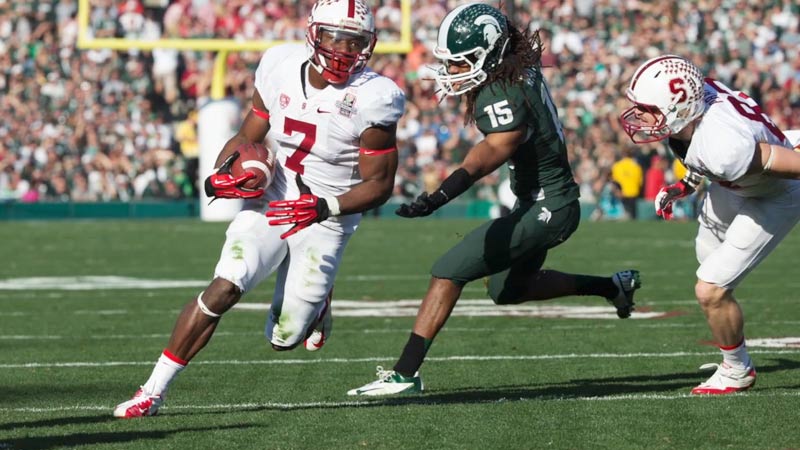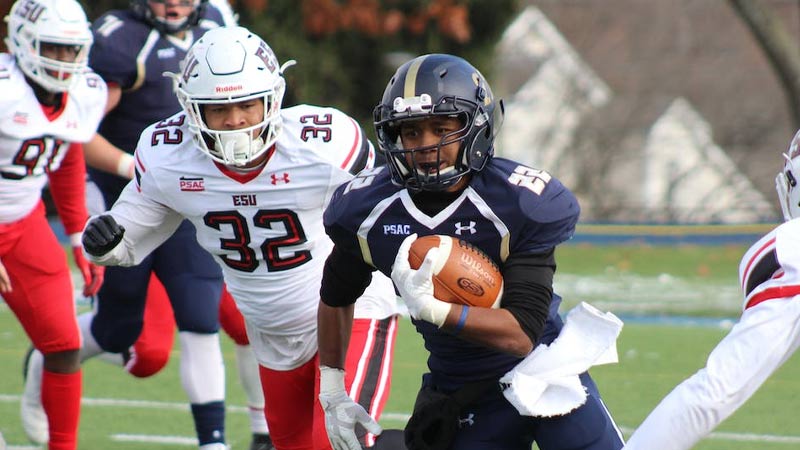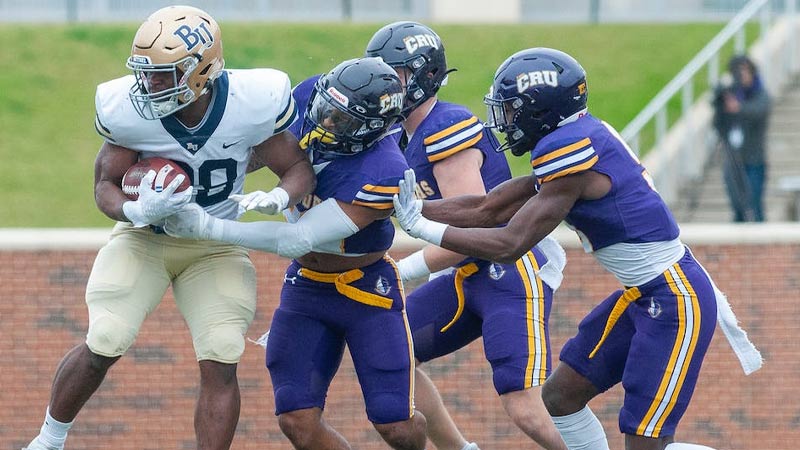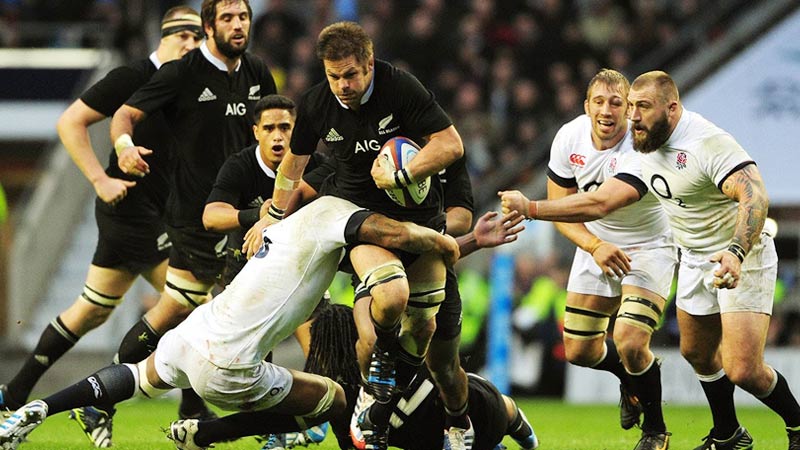Football is a sport renowned for its complexity and strategic depth, with each position on the field playing a vital role in the team’s overall success. One such position that holds a significant impact on the game is the “flanker.”
As enthusiasts and fans of the game, it’s essential to unravel the nuances of this position to appreciate its role in shaping the dynamics of the field.
In this blog post, we’ll dive into the world of football’s flanker position, exploring its significance, responsibilities, and how it influences the outcome of matches.
What is a Flanker in Football
In football, the term “flanker” is commonly used to refer to a player who lines up on the outer edges of the offensive formation. The flanker position is most often associated with American football and Canadian football.
The primary responsibility of a flanker varies depending on the specific offensive scheme and play design, but their role generally involves receiving passes, running routes, and contributing to the team’s passing game.
Key characteristics and responsibilities of a flanker include:
Receiving Passes
Flankers are often utilized as wide receivers, and they are expected to run precise routes, create separation from defenders, and catch passes from the quarterback.
They contribute to the passing attack by being potential targets for downfield throws, short passes, and screens.
Route Running
Flankers need to be agile and adept at running a variety of routes, such as go routes (straight down the field), out routes, slant routes, and crossing routes.
Their ability to execute these routes effectively helps keep the defense guessing and creates opportunities for big plays.
Blocking
While the primary focus of a flanker is on the passing game, they may also be involved in blocking, particularly during running plays or screen passes.
Good blocking helps clear paths for running backs and allows other receivers to make plays.
Alignment
Flankers typically line up on the line of scrimmage, just outside the offensive tackles.
They are positioned on the “flanks” of the offensive formation, hence the name “flanker.”
It’s important to note that the terminology and specific roles of positions can vary between different football leagues and systems. The role of a flanker may differ in American football, Canadian football, and other variations of the sport.
Position of a Flanker in Football

In American football, the flanker is a wide receiver position that lines up on the line of scrimmage, positioned on the outer edges of the offensive formation. The position is also sometimes referred to as “split end” or “wideout.”
The flanker lines up on the same side as the tight end, but unlike the tight end, the flanker is positioned on the line of scrimmage. Here are a few key points about the position of a flanker in American football:
Alignment
The flanker lines up on the line of scrimmage, meaning that part of their body is directly above or slightly behind the line of scrimmage. This is different from other wide receiver positions like the “slot receiver,” who lines up off the line of scrimmage.
Route Running
Flankers are responsible for running a variety of routes to create separation from defenders and make themselves open targets for the quarterback. They may run deep routes, intermediate routes, and short routes, depending on the play design.
Pass-Catching
Flankers are expected to catch passes thrown by the quarterback. They need good hands, agility, and the ability to adjust to the flight of the ball in order to make receptions.
Blocking
While the primary focus of a flanker is on the passing game, they may also be involved in blocking, especially during running plays or screen passes. Effective blocking helps support the team’s overall offensive strategy.
Motion
Flankers may be in motion before the snap, meaning they can move laterally behind the line of scrimmage before the ball is snapped. This motion can help create confusion for the defense and provide opportunities for misdirection plays.
Formation Variations
The exact alignment and responsibilities of a flanker can vary based on the offensive formation and play call. Coaches often use different formations and strategies to take advantage of the flanker’s skills and exploit the defense’s weaknesses.
Remember that the terminology and roles in football can differ between leagues and systems, so the specific duties of a flanker may vary in different contexts.
Strategies to be a Flanker
Becoming an effective flanker in American football involves a combination of physical skills, football knowledge, and strategic understanding. Here are some strategies to excel in the flanker position:
Develop Route Running Skills
Route running is crucial for a flanker. Work on your ability to explode off the line of scrimmage, make sharp cuts, and vary your speeds to create separation from defenders. Practice running a variety of routes to become a versatile target for your quarterback.
Improve Hands and Catching Technique

Flankers need reliable hands to catch passes in various situations. Focus on your catching technique, hand-eye coordination, and concentration. Practice catching balls at different angles and speeds to become a consistent pass-catcher.
Enhance Agility and Speed
Agility and speed are essential for creating separation from defenders and making quick cuts during routes. Incorporate agility drills, cone drills, and speed workouts into your training regimen to improve your overall athleticism.
Study Defenses
Understand defensive coverages, alignments, and strategies. Recognizing zone versus man coverage and knowing how to exploit defensive weaknesses will make you a more effective receiver.
Film Study
Watch game footage to analyze your own performance and learn from other successful flankers. Study how they release off the line, read defenses, and make adjustments during routes.
Build Chemistry with Quarterback
Develop a strong rapport with your quarterback. Practice timing, communication, and the nuances of route adjustments based on the defense’s movements.
Master Blocking Techniques
While flankers are primarily involved in the passing game, being a competent blocker is valuable. Learn proper blocking techniques to support your teammates on running plays and screen passes.
Versatility
Be versatile in your skill set. Work on different types of routes, such as deep routes, intermediate routes, and quick screens. This versatility keeps the defense guessing and makes you a multifaceted threat.
Physical Conditioning
Football requires endurance and strength. Stay in good physical shape through strength training, cardiovascular exercises, and flexibility routines to perform consistently over the course of a game.
Mental Toughness
Football can be physically and mentally demanding. Develop mental toughness to handle pressure situations, stay focused, and bounce back from mistakes.
Understanding of Offensive System
Familiarize yourself with your team’s offensive system. Know the playbook, terminology, and the roles of other positions on the field. This understanding helps you make better decisions during plays.
Practice Situational Football
Work on situational scenarios like red zone plays, third-down conversions, and two-minute drills. Learning how to adapt your play style based on the game situation is crucial.
Receive Coaching Feedback
Listen to your coaches and seek their feedback. They can provide insights on your performance, offer guidance for improvement, and help you fine-tune your skills.
Remember that becoming a successful flanker takes dedication, hard work, and continuous improvement. Regular practice, attention to detail, and a passion for the game will contribute to your growth in this position.
Significance of Flanker in Football

The flanker position holds significant importance in football, particularly in American football and Canadian football. The role of a flanker contributes to the overall offensive strategy and can greatly impact the success of a team’s passing game.
Here are some key reasons why the flanker position is significant in football:
Passing Game Contribution
Flankers are integral to a team’s passing attack. They are primary targets for quarterbacks on passing plays, helping to move the ball down the field and score points.
Their ability to get open, catch passes, and gain yards after the catch can significantly influence the outcome of a game.
Deep Threat
Flankers often have the speed and agility to run deep routes, stretching the defense vertically.
This ability to threaten the defense deep down the field opens up space for other receivers and running backs, as well as creates opportunities for big plays and touchdowns.
Creating Mismatches
Skilled flankers can exploit matchups against slower or less experienced defenders. Their route-running abilities and agility can make it difficult for linebackers or safeties to cover them effectively, leading to favorable matchups that the offense can exploit.
Zone Coverage Buster
In zone coverage defenses, where defenders are responsible for specific areas of the field, flankers can find soft spots and seams in the coverage.
Their awareness and understanding of defensive schemes allow them to settle into open areas and become reliable targets for their quarterbacks.
Yards After the Catch
Flankers often receive quick screen passes and short throws that allow them to use their agility and elusiveness to gain yards after the catch.
Their ability to turn short passes into significant gains can move the chains and keep drives alive.
Drawing Defensive Attention
A skilled flanker can draw extra defensive attention, leading to double coverage or adjustments in defensive alignments.
This can create opportunities for other receivers and playmakers to exploit one-on-one matchups elsewhere on the field.
Field Stretching
The presence of a threat on the flanks forces the defense to cover the entire width of the field, opening up space in the middle for slot receivers, tight ends, and running backs.
This stretching of the defense can create more opportunities for various offensive plays.
Decoy Role
Even when not directly targeted, flankers can serve as decoys. Their movements and routes can divert defenders’ attention, creating openings for other players and contributing to the overall complexity of offensive plays.
Blocking
While the primary focus is on the passing game, flankers may be called upon to block on running plays or screen passes. Effective blocking can contribute to successful running plays and create additional yards for ball carriers.
Adaptability
A versatile flanker who can run various types of routes and adjust to different defensive coverages provides the offensive coordinator with more options and flexibility in play calling.
The flanker position is a key component of a football team’s offensive strategy, contributing to its ability to move the ball, score points, and keep the defense off-balance. A skilled and dynamic flanker can make a significant impact on the outcome of a game.
FAQs
What is a flanker in football?
The flanker in football refers to a wide receiver who lines up on the outer edges of the offensive formation, specifically on the line of scrimmage. This position is often associated with American and Canadian football, where the flanker plays a critical role in the passing game.
What are the primary responsibilities of a flanker?
A flanker’s main responsibilities include running precise routes, catching passes from the quarterback, creating separation from defenders, and contributing to the team’s passing attack. They also play a role in blocking running plays and screen passes.
How does a flanker contribute to the passing game?
Flankers contribute to the passing game by using their route-running skills to get open, making catches at various depths of the field, and gaining yards after the catch. Their ability to stretch the defense vertically and exploit defensive coverages opens up opportunities for big plays.
How does a flanker affect defensive strategies?
A skilled flanker can force the defense to adjust its coverage, potentially leading to double coverage or altered defensive alignments. This not only creates opportunities for the flanker but also opens up favorable matchups for other offensive players.
Is blocking important for a flanker?
While the primary focus is on the passing game, blocking remains a significant aspect of a flanker’s role. Effective blocking can support running plays, create additional yards for ball carriers, and contribute to the overall success of the offensive strategy.
Wrapping Up
The flanker position in football is a multifaceted and strategic role that plays a pivotal part in a team’s offensive dynamics. From running precise routes and catching passes to stretching the defense and influencing defensive strategies, the flanker’s impact extends well beyond the lines of the field.
As we delve deeper into the world of football, understanding the intricacies of positions like the flanker enhances our appreciation for the sport’s complexity and the teamwork required to achieve victory on the gridiron.
Hopefully, you’ve got my point. Thank you for your support.







